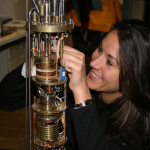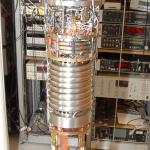Administration of EMP-related Publications
| year | 2022 |
| author(s) | Mathieu Taupin, Silke Paschen |
| title | Are Heavy Fermion Strange Metals Planckian? |
| document type | Paper |
| source | Crystals 12, 251 (2022) |
| doi | 10.3390/cryst12020251 |
| arxiv | https://arxiv.org/abs/2201.02820 |
| EMP/Horizon2020 | This publication includes a EMP/Horizon2020 acknowledgement. |
| abstract | Strange metal behavior refers to a linear temperature dependence of the electrical resistivity at temperatures below the Mott-Ioffe-Regel limit. It is seen in numerous strongly correlated electron systems, from the heavy fermion compounds, via transition metal oxides and iron pnictides, to magic angle twisted bi-layer graphene, frequently in connection with unconventional or "high temperature" superconductivity. To achieve a unified understanding of these phenomena across the different materials classes is a central open problem in condensed matter physics. Tests whether the linear-in-temperature law might be dictated by Planckian dissipation - scattering with the rate ∼kBT/ℏ, are receiving considerable attention. Here we assess the situation for strange metal heavy fermion compounds. They allow to probe the regime of extreme correlation strength, with effective mass or Fermi velocity renormalizations in excess of three orders of magnitude. Adopting the same procedure as done in previous studies, i.e., assuming a simple Drude conductivity with the above scattering rate, we find that for these strongly renormalized quasiparticles, scattering is much weaker than Planckian, implying that the linear temperature dependence should be due to other effects. We discuss implications of this finding and point to directions for further work. |















